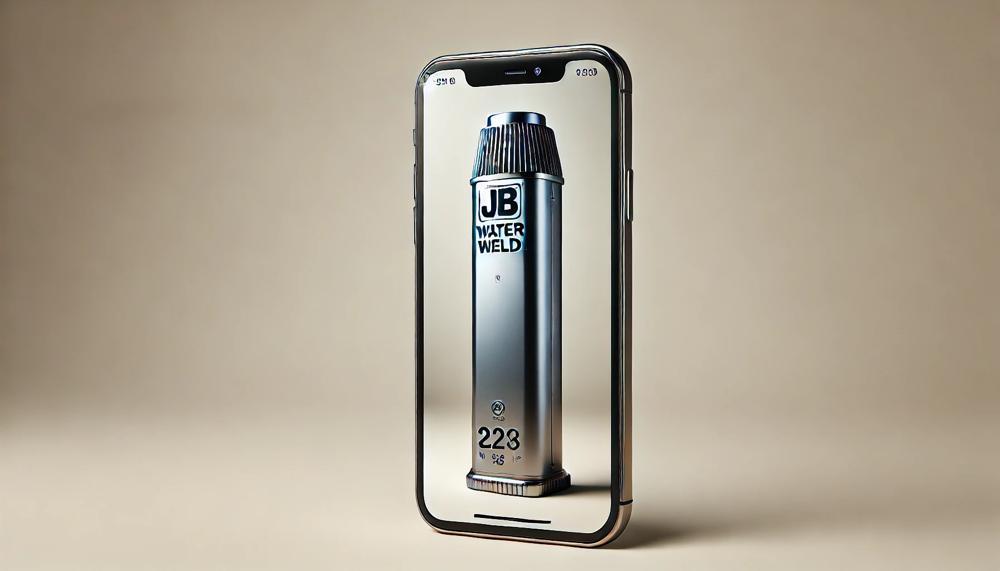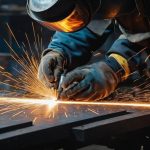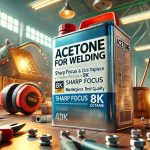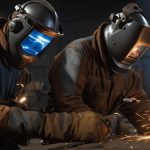Imagine you’re in the middle of a crucial repair project, and the only thing standing between you and success is a leaky pipe or a broken ceramic vase. Enter JB Water Weld: a lifesaver in the form of an epoxy putty, famed for its strength, versatility, and the almost magical ability to fix anything from plumbing mishaps to marred metalwork. Often lauded as the handyman’s secret weapon, JB Water Weld is renowned not just for its ability to adhere to a multitude of surfaces but also for its impressive water-resistant properties, making it a go-to solution in both damp environments and underwater applications.
This blog post is dedicated to unraveling the mysteries of JB Water Weld’s durability and permanence. Here’s what we’ll delve into:
- The Science Behind JB Water Weld: Understanding its unique formula and how it works.
- Versatility in Application: From household fixes to industrial-grade repairs.
- The Permanence Debate: Is JB Water Weld truly a permanent solution?
- Real-World Examples: Stories and testimonials that showcase its effectiveness.
- Limitations and Precautions: What to know before using JB Water Weld.
Designed for DIY enthusiasts, professional handymen, and the simply curious, this article balances casual narrative flair with deep, professional insight. Our exploration will not only satisfy your immediate curiosity but will also arm you with knowledge that could prove essential in your next repair challenge. So, let’s dive in and discover whether JB Water Weld truly lives up to its reputation as a permanent fix-it solution.
Contents
- 1 Is Jb Water Weld Permanent?
- 2 How Does JB Water Weld Work?
- 3 Factors Affecting the Longevity of JB Water Weld
- 4 Proper Preparation for Using JB Water Weld
- 5 The Importance of Curing Time for a Strong Bond
- 6 Different Types of Materials and Their Effect on JB Water Weld’s Strength
- 7 Tips for Achieving a Permanent Repair with JB Water Weld
- 8 Conclusion
Is Jb Water Weld Permanent?
Yes, JB Water Weld is regarded as a permanent solution for welding, but its lasting effectiveness hinges on correct application and environmental conditions.
What is JB Water Weld?
JB Water Weld is a specialised two-component epoxy putty designed for underwater and wet applications. It is utilized in an array of repairs such as plumbing leaks, marine maintenance, and automotive issues.
Why is JB Water Weld Considered a Permanent Solution?
| Adhesion | Strong bond to diverse materials like metal, wood, plastic, and glass. | Enhances versatility and applicability across different welding scenarios. |
| Tensile Strength | Over 900 PSI | Ensures durability under high pressure and weight. |
| Resistance | Water, oil, fuels, acids, and other chemicals | Makes it suitable for harsh environmental conditions. |
| Temperature Tolerance | Up to 300 degrees Fahrenheit | Maintains bond strength under high temperatures. |
| Cure Time | Quick-setting in 25 minutes, fully cures in 15-24 hours | Facilitates rapid repairs while ensuring a solid bond after full curing. |
Key Factors for Permanent Bonding
- Surface Preparation: Ensure surfaces are clean, dry, and slightly roughened to improve the epoxy’s grip.
- Proper Mixing: Equal parts of resin and hardener must be thoroughly mixed to trigger the chemical bonding process.
- Correct Application: Apply within the working time after mixing to ensure optimum bonding strength.
- Adequate Curing Time: Allow full curing before subjecting the repair to stress or environmental factors.
In essence, JB Water Weld’s permanent bonding capabilities stem from its robust formulation designed to endure diverse conditions and adhere to multiple surfaces. It’s a trusty ally for those in dire need of resilient, enduring repairs in wet and underwater scenarios. Yet, the bond’s permanence is contingent upon proper application and adherence to guidelines.
How Does JB Water Weld Work?
JB Water Weld operates through a simple yet powerful chemical process, transforming from a malleable putty into a rock-hard substance capable of bonding various materials with formidable strength. This transformation is the core of its efficacy and the reason it’s hailed as a permanent fix for a myriad of welding needs.
How JB Water Weld Works:
- Preparation: The journey to a solid weld starts with surface prep. Ensure the area is clean and slightly roughened for optimal adhesion.
- Mixing: Equal parts of the epoxy putty need to be kneaded together. This blending activates the epoxy, starting the chemical process.
- Application: Once mixed, the putty is applied to the break or seam. The epoxy begins to harden, adhering firmly to the surface.
- Curing: In 25 minutes, it’s solid enough to handle, but full curing, where it reaches peak strength, takes about an hour.
Why It’s a Permanent Solution:
- Versatility: Works across a plethora of materials – metal, plastic, wood, ceramics.
- Durability: Once cured, it resists high temperatures and chemicals.
- Ease of Use: No special tools or skills required, making it accessible to everyone from professionals to hobbyists.
- Cost-Effective: Prevents the need for frequent repairs or replacements, saving resources in the long run.
| Feature | Benefit | Impact |
| Versatile Application | Adheres to multiple surfaces | Broader usage in repairs and welding |
| High Durability | Resists temperature and chemicals | Long-lasting repairs |
| Simple to Use | No special skills needed | Accessible for all levels of experience |
| Cost-Effective | Reduces need for replacements | Saves time and money |
Factors Affecting the Longevity of JB Water Weld
When it comes to ensuring the enduring resilience of JB Water Weld, several key factors play a pivotal role. Each of these elements is critical in determining how well and how long JB Water Weld will stand the test of time, underpinning repairs with reliability and strength. Let’s delve into the specifics:
| Factor | Description | Impact on Longevity |
| Surface Preparation | Meticulous cleaning and roughening of surfaces before application. | Directly influences bond strength; improper prep can lead to early failure. |
| Application Technique | Adherence to recommended methods, including mixing and applying. | Ensures optimal bonding and coverage, preventing weak spots. |
| Curing Time | Allowing the epoxy to fully harden as per guidelines. | Essential for achieving maximum bond strength and durability. |
| Exposure to Elements | Long-term exposure to water, chemicals, and extreme temperatures. | Can weaken the bond over time, especially if not suited to the environment. |
| Material Compatibility | Match between JB Water Weld and the substrates being joined. | Crucial for ensuring the epoxy adheres well and remains durable. |
Ensuring the longevity of JB Water Weld involves more than just application; it’s about treating the process with a meticulous eye. From the groundwork of preparing surfaces with care, to the precision in how it’s applied, and giving it the time it rightly demands to cure. Each step is a link in a chain that holds the repair together. Mind the elements it will face and the materials it bonds; for JB Water Weld, versatility is a strength, yet its lasting grip on diverse materials hinges on acknowledging these nuances.

Proper Preparation for Using JB Water Weld
Why Proper Preparation Matters
Proper preparation is the linchpin in securing a lasting mend with JB Water Weld. It’s the difference between a patch that stands the test of time and one that folds at the first sign of trouble. Without these steps, you’re merely applying a temporary bandage to a problem that needs a surgical fix. It’s the foundation that ensures the weld holds firm, resists wear, and shields against leaks.
Essential Steps for Preparation
- Clean the Surface: Banish all traces of dirt, grease, or other unwelcome guests from the surface. This step isn’t about a light dusting; it’s about ensuring the area is spotless. A clean surface ensures that nothing interferes with the bond between JB Water Weld and the material in need of repair.
- Roughen the Surface: This isn’t merely about giving the surface a new hairstyle; it’s about creating a landscape for the JB Water Weld to cling to. A textured surface is like a handshake between the material and the repair compound.
- Dry the Surface: Moisture is the silent adversary of a solid repair. Ensuring the surface is bone dry eradicates the risk of a weak bond.
- Mix the Product Thoroughly: Like a well-prepared meal, the mixture needs to be just right. Unequal parts or poorly mixed components result in a subpar repair.
- Apply the Mixture Promptly: Once mixed, there’s no dilly-dallying. The JB Water Weld should be applied with purpose and precision within the golden window of 2-3 minutes.
- Let It Cure Properly: Patience is a virtue, especially when it comes to curing. Rush this step, and the repair might not just fail; it could lead to further damage.
The Importance of Curing Time for a Strong Bond
The significance of curing time in establishing a durable bond cannot be overstated, especially when it comes to JB Water Weld, a two-part epoxy putty celebrated for its robust bonding capabilities across a variety of materials.
This adhesive’s efficacy hinges on allowing it adequate time to cure, a process that solidifies the bond and endows it with the strength to endure stresses and pressures that are par for the course in welding applications.
Understanding Curing Time
Curing time is the span needed for JB Water Weld to fully harden and achieve its optimal bonding strength. This period is pivotal because it determines the bond’s resilience and longevity.
Skimping on curing time can result in a bond that’s prone to cracking or breaking under duress, while affording the epoxy ample time to cure fosters a bond that can withstand harsh conditions.
Factors Affecting Curing Time
Several elements play a role in the curing process of JB Water Weld:
- Temperature and Humidity: Room temperature is ideal, but variations can alter the curing timeline.
- Thickness of the Epoxy Layer: Thicker layers necessitate longer curing times due to the greater volume of material that needs to solidify.
- Surface Preparation: The thoroughness of cleaning, sanding, and drying the surfaces to be bonded can also influence the curing process.
Guidelines for Optimal Curing
| Recommended Curing Time | 1 hour at room temperature | Crucial for initial bonding |
| Full Cure Time | Up to 24 hours | Needed to achieve maximum strength |
| Application Tips | Proper mixing and even application | Ensures uniform curing and bond strength |
Following these guidelines not only secures a strong bond but also enhances the longevity of the repair, making JB Water Weld a reliable welding solution for non-structural, non-load-bearing repairs. Bear in mind, rushing the curing process or overlooking the application recommendations can undermine the bond’s integrity, leading to potential failures.
Different Types of Materials and Their Effect on JB Water Weld’s Strength
Understanding the impact of various materials on the strength and permanency of JB Water Weld is crucial for anyone looking to make durable repairs or fabrications. This two-part epoxy putty, renowned for its robust bonding prowess, doesn’t interact with all materials in the same manner. Here’s a rundown on how it fares across different substrates:
| Material | Surface Preparation | Effect on Strength and Permanency |
| Metal | Clean, dry, remove rust, sand lightly | Forms a very strong and permanent bond, ideal for automotive and plumbing repairs |
| Wood | Clean, dry, sand to create texture | Good adhesion, but the bond strength can vary with wood type; generally strong and long-lasting |
| Plastics | Clean, degrease, sand for texture | Varies greatly with plastic type; some may not bond well, leading to weaker, less permanent bonds |
| Ceramic | Clean, dry, lightly sand if glazed | Strong bond for repairs; permanency depends on the type of ceramic and the repair environment |
| Environmental Conditions | Apply in moderate temperatures | Extreme temperatures can weaken the bond; UV exposure can degrade the epoxy over time |
A few things stand out when discussing JB Water Weld’s interactions with different materials:
- Surface Preparation: Paramount for all materials. Without proper cleaning and preparation, the bond will be compromised, affecting both strength and permanency.
- Material Compatibility: Not all materials are created equal in the eyes of JB Water Weld. While it excels with metals and ceramics, certain plastics can be problematic.
- Environmental Considerations: The ambient environment plays a significant role. Extremes of temperature and UV exposure can lead to bond degradation over time.
- Application Method: A thinner layer of JB Water Weld is recommended for optimal strength. Thick layers may not cure as effectively, leading to a weaker bond.
In essence, while JB Water Weld boasts strong and durable bonding capabilities, the longevity and effectiveness of its application heavily rely on the material it’s applied to, the preparatory steps taken, and the conditions it’s subjected to post-application.
Tips for Achieving a Permanent Repair with JB Water Weld
Achieving a Permanent Repair with JB Water Weld involves careful preparation and application. Here’s how you can ensure a strong, enduring bond:
Surface Preparation
- Cleanliness is paramount. Remove all grime, grease, and dust from the repair area. Use a degreaser or soap and water for best results.
- After cleaning, drying thoroughly is critical. Moisture hinders adhesion.
- Roughen the surface. Using sandpaper, create a texture on the surface for better bonding.
Mixing the Components
- Equal parts are crucial. Ensure you mix the resin and the hardener in exact equal proportions.
- Mix thoroughly until you achieve a uniform colour, indicating that the materials are well combined.
- Prepare small batches to avoid wasting material and ensure the mix doesn’t harden prematurely.
Application
- Speed is essential. JB Water Weld starts to set in 15 minutes. Apply it to the surface promptly after mixing.
- Apply firmly, pressing the epoxy into the crack or break. Ensure it fully occupies the repair space.
Setting and Curing
- Apply pressure. Use clamps or weights to press the bonded materials together, aiding in stronger adhesion.
- Allow time to cure. Leave the repair undisturbed for at least an hour, though a full 24 hours is ideal for maximum strength.
Heat Resistance and Post-Repair
- Remember, JB Water Weld withstands up to 300°F. It’s perfect for heat-exposed repairs once fully cured.
- Post-curing, smooth or shape the repair as needed. You can sand or drill after the epoxy has set.
Storage
- Keep the product in a cool, dry place. Proper storage extends its shelf life.
- Seal tightly after use. Ensure caps are properly secured to prevent the material from drying out.
Testing
- If the JB Water Weld has been unused for a lengthy period, mix a small sample first to check its efficacy.
Conclusion
In the realm of DIY repairs and professional maintenance, JB Water Weld emerges as a champion, celebrated for its permanence and prowess in bonding. This epoxy putty’s reputation as a permanent fix isn’t unwarranted—it’s a testament to its formidable adhesion, resistance, and durability across a myriad of materials and conditions. Yet, the secret to its lasting success lies in the meticulous application—from surface preparation to curing, each step is pivotal.
Whether sealing a leaky pipe underwater or mending a cherished ceramic, JB Water Weld stands as a versatile ally, ready to tackle challenges in plumbing, automotive, marine, and beyond. Its ability to withstand harsh environments, resist chemicals, and endure high temperatures makes it a reliable choice for both temporary fixes and permanent solutions.
However, the true permanence of JB Water Weld hinges on the user’s adherence to proper preparation and application techniques. The narrative of its effectiveness is woven through the user’s commitment to follow through on each essential step, ensuring that this mighty adhesive lives up to its full potential.
In essence, JB Water Weld isn’t just a product; it’s a promise of permanence, a testament to durability, and a beacon of reliability in the world of repair and maintenance.





